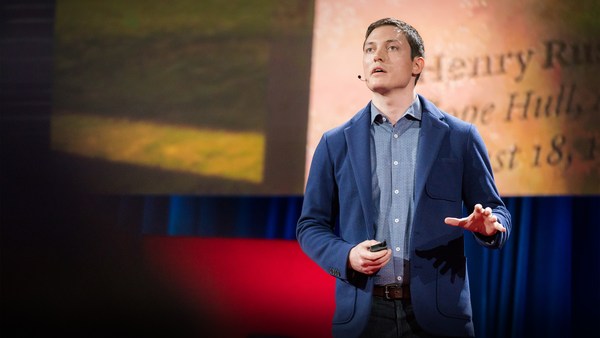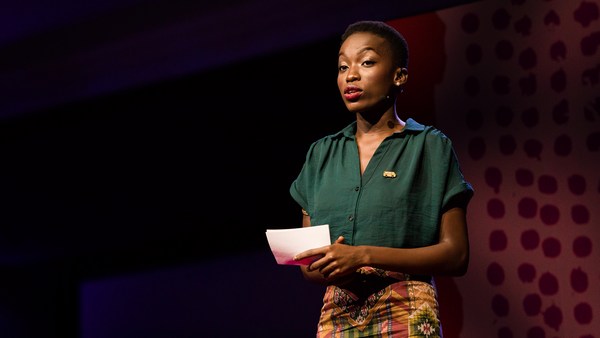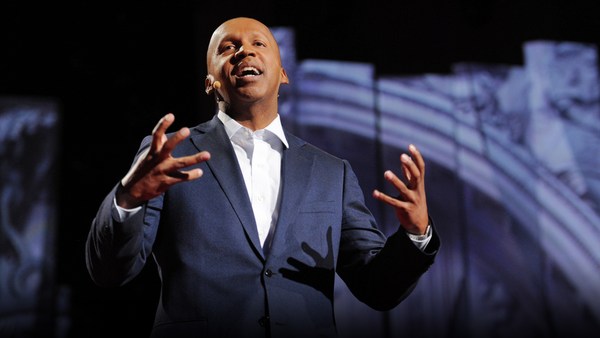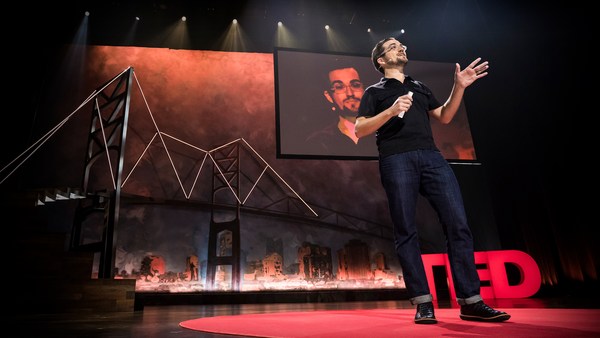The longest journey that I have ever taken. That was in 2002. I was only 19 years old. It was the first time I had ever been on an airplane and the first time that I had left my country, Rwanda.
I had to move thousands of kilometers away to follow a dream. A dream I have had ever since I was a child. And that dream was to become an architect. That was impossible at the time in my country. There were no schools of architecture. So when I got a scholarship to study in China, I left my life and my family behind and I moved to Shanghai.
It was an amazing time. This country was going through a major building boom. Shanghai, my new home, was quickly turning into a skyscraper city. China was changing. World-class projects were built to convey a new image of development. Modern, striking engineering marvels were going up literally everywhere. But behind these facades, exploitation of huge numbers of migrant workers, massive displacement of thousands of people made these projects possible. And this fast-paced development also contributed significantly to the pollution that is haunting China today.
Fast-forward to 2010, when I went back home to Rwanda. There, I found development patterns similar to what I saw in China. The country was and still is experiencing its own population and economic growth. The pressure to build cities, infrastructure and buildings is at its peak, and as a result, there is a massive building boom as well.
This is the reality across the entire continent of Africa, and here's why. By 2050, Africa's population will double, reaching 2.5 billion people. At this point, the African population will be slightly less than the current population of China and India combined. The infrastructure and buildings needed to accommodate this many people is unprecedented in the history of humankind. We have estimated that by 2050, we have to build 700,000,000 more housing units, more than 300,000 schools and nearly 100,000 health centers.
Let me put that into perspective for you. Every day for the next 35 years, we have to build seven health centers, 25 schools and nearly 60,000 housing units each day, every day.
How are we going to build all of this? Are we going to follow a model of unsustainable building and construction similar to what I witnessed in China? Or can we develop a uniquely African model of sustainable and equitable development? I'm optimistic we can. I know Africans who are already doing it. Take Nigerian architect Kunlé Adeyemi for instance, and his work in slums of coastal megacities. Places like Makoko in Lagos, where hundreds of thousands of people live in makeshift structures on stilts on water, without government infrastructure or services. A community at great risk of rising sea levels and climate change. And yet, people who live here are examples of great ingenuity and the will to survive. Kunlé and his team have designed a prototype school that is resilient to rising sea levels. This is Makoko School. It's a floating prototype structure that can be adapted to clinics, to housing, to markets and other vital infrastructure this community needs. It's an ingenious solution that can ensure this community lives safely on the waters of Lagos.
This is Francis Kéré. He works in the country where he comes from, Burkina Faso. Kéré and his team have designed projects that use traditional building techniques. Kéré and his team working in the communities have developed prototype schools that the whole community, similar to every project in the villages of this country, comes together to build. Children bring stones for the foundation, women bring water for the brick manufacturing, and everybody works together to pound the clay floors. Working with the community, Kéré and his team have created projects that function better, with adequate lighting and adequate ventilation. They're appropriate for this particular context and really, really beautiful as well.
For the past seven years, I have been working as an architect at MASS Design Group. It's a design firm that began in Rwanda. We have worked in several countries in Africa, focusing on this more equitable and sustainable model of architectural practice, and Malawi is one of those countries. It's a country with beautiful, remote landscapes with high-peak mountains and fertile valleys. But it also has one of the worst maternal mortality rates in the world. A pregnant woman in Malawi either gives birth at home, or she has to walk a really long journey to the nearest clinic. And one out of 36 of these mothers dies during childbirth.
In Malawi, with our team at MASS Design Group, we designed the Kasungu Maternity Waiting Village. This is a place women come to six weeks before their due dates. Here they receive prenatal care and train in nutrition and family planning. At the same time, they form a community with other expectant mothers and their families. The design of the of Kasungu Maternity Waiting Village borrows from the vernacular typologies of Malawi villages and is built using really simple materials and techniques. The earth blocks that we used were made from the same soil of this site. This reduces the carbon footprint of this building, but first and foremost, it provides a safe and dignified space for these expectant mothers.
These examples show that architecture and design have the power and the agency to address complex problems. But more to point, that we can develop a model of effective solutions for our communities. But these three examples are not enough. 300 more examples will not be enough. We need a whole community of African architects and designers to lead with thousands more examples.
In May of this year, we convened a symposium on African architecture, in Kigali, and we invited many of the leading African designers and architectural educators working across the continent. We all had one thing in common. Every single one of us went to school abroad and outside of Africa. This has to change. If we are to develop solutions unique to us, rather than attempting to turn Kigali into Beijing, or Lagos into Shenzhen, we need a community that will build the design confidence of the next generation of African architects and designers.
(Applause)
In September last year, we launched the African Design Centre to start building this community. We admitted 11 fellows from across the continent. It's a 20-month-long, design-build fellowship program. Here, they are learning to tackle big challenges such as urbanism and climate change, as Kunlé and his team have. They're working with communities to develop innovative building solutions and processes, as Kéré and his team have. They're learning to understand the health impact of better buildings as we at MASS Design Group have been researching for the past several years. The crowning moment of the fellowship is a real project that they designed and built.
This is Ruhehe Primary School, the project they designed. They immersed themselves in the community to understand the challenges but also uncover opportunities, like using a wall made of local volcanic stone to turn the entire campus into a space of play and active learning. They evaluated the environmental conditions and developed a roof system that maximizes daylight and improves acoustic performance. The construction at Ruhehe Primary School will begin this year.
(Applause)
And over the coming months, the African Design Centre fellows are going to work hand-in-hand with the Ruhehe community to build it.
When we asked the fellows what they want to do after their African Design Centre fellowship, Tshepo from South Africa said he wants to introduce this new way of building into his country, so he plans to open a private practice in Johannesburg. Zani wants to expand opportunities for women to become engineers. Before joining the African Design Centre, she helped start, in Nairobi, an organization to bridge the gender gaps for women in engineering fields, and she hopes to take this movement across Africa, eventually the whole world. Moses, from South Sudan, the world's newest country, wants to open the first polytechnic school that will teach people how to build using local materials from his country. Moses had to be determined to become an architect. The civil war in his country frequently interrupted his architectural education. At the time he was applying to join the African Design Centre, we could hear gunshots going off in the background of his interview call. But even in the middle of this civil war, Moses hangs on to this idea that architecture can be a way to bridge communities back together. You have to be inspired by this fellow's belief that great architecture can make a difference on how the future of Africa is built.
The unprecedented growth of Africa cannot be ignored. Imagine Africa's future cities, but not as vast slums, but the most resilient and the most socially inclusive places on earth. This is achievable. And we have the talent to make it a reality. But the journey to ready that talent for the task ahead, like my own journey, is far too long. For the next generation of African creative leaders, we have to shorten and streamline that journey. But most importantly -- and I cannot stress this enough -- we have to build their design confidence and empower them to develop solutions that are truly African but globally inspiring.
Thank you very much.
(Applause)





